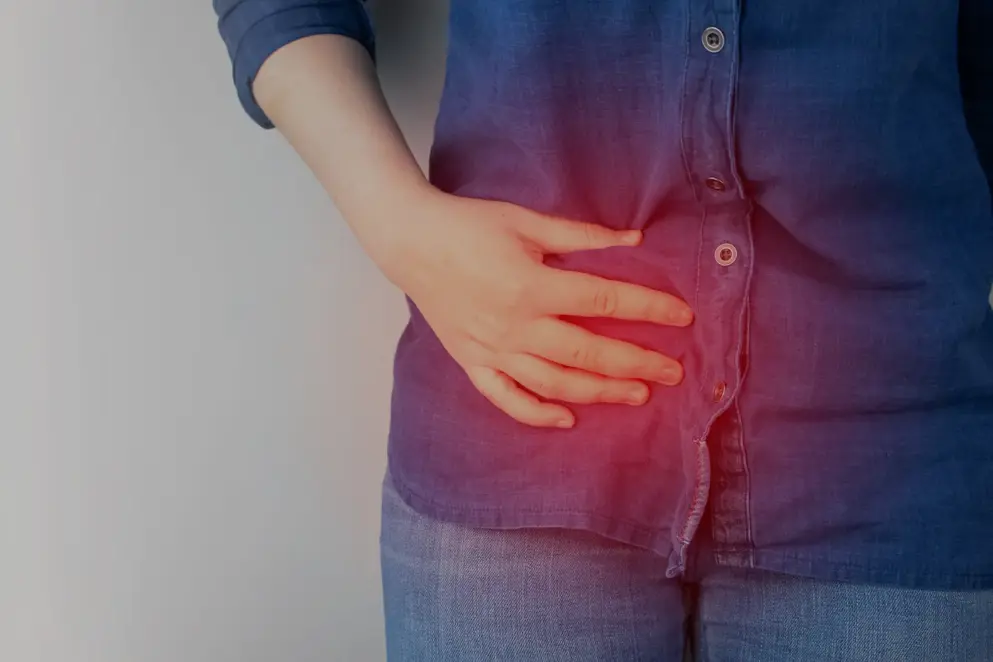
Understanding ulcerative colitis
Improve your ability to support patients with ulcerative colitis.
- Visualise the pathogenesis with our diagrammatic overview
- Discover how disease severity is determined with endoscopic imagery
- Get to grips with the ongoing evolution of therapeutic targets
In this section
Epidemiology
Prevalence and incidence
Ulcerative colitis has a higher prevalence than Crohn’s disease in adults1,2. It is a chronic, progressive, relapsing and remitting condition characterised by continuous inflammation of the colonic mucosa3–5. As in Crohn’s disease, there are regional variations in the prevalence and incidence of ulcerative colitis, but an overall global increase has been consistently reported6–9.
A systematic review investigating the worldwide prevalence and incidence of ulcerative colitis revealed that the prevalence was highest in Europe (505 cases per 100,000 individuals) and North America (249 cases per 100,000 individuals) (Figure 1)10. Within these regions, the highest prevalence values have been reported in Norway and the United States11.
Figure 1. Worldwide ulcerative colitis prevalence per 100,000, 1990–2016 (Adapted11).
Overall, incidence of ulcerative colitis is increasing globally, though there is substantial variation between different populations and geographical regions, with estimates ranging from 0.5–31.5 cases per 100,000 individuals each year9,12,13. In recent years, newly industrialised countries have experienced a particular surge in the number of new cases reported annually. In Brazil, for example, the annual percentage change has recently been calculated at 14.9% (95% confidence interval 10.4–19.6)11.
Disease development
In contrast to Crohn’s disease, ulcerative colitis is generally thought to be equally as common in males as in females across all age groups5. It can develop at any age from infancy onwards, but most frequently presents in adolescents and other patients under 30 years of age3. Interestingly, there is a second, albeit less pronounced peak between the ages of 50 and 80 years old, with incidence of ulcerative colitis on the rise in patients over the age of 65 years3,14.
Aetiology
Though the exact causes of ulcerative colitis are not well understood, experts have identified several important factors that are thought to contribute to the development of this disease5,15.
Genetic susceptibility
A family history of IBD is considered the most important risk factor for developing ulcerative colitis and has been reported in 8–14% of patients16,17. Indeed, first-degree relatives of patients with IBD are four times more likely to develop ulcerative colitis17. Rates of ulcerative colitis also vary between different ethnic groups and, like Crohn’s disease, it is particularly prevalent among Ashkenazi Jews, providing further evidence of a genetic component18.
In a 2017 review, it was reported that genome-wide associated studies (GWAS) have now identified over 200 susceptibility loci for IBD. Of these, 137 confer a higher risk of developing both ulcerative colitis and Crohn’s disease, while a further 27 are specific to ulcerative colitis19. These susceptibility loci include human leukocyte antigen and genes associated with barrier function17. However, these “identified genetic factors” can only account for around 8% of the disease variance and therefore have poor predictive capacity and are of little use in a clinical setting17,19.
Gut flora
Reduced microbial diversity of the gut has been reported in patients with both ulcerative colitis, and Crohn’s disease20. In genetically predisposed individuals, the resultant state of dysbiosis may lead to onset of disease21,22. Loss of commensal bacteria, particularly those belonging to the Bacteroidetes and Firmicutes phyla, is accompanied by the loss of their protective benefits22. It remains to be seen whether the dysbiosis observed in patients with ulcerative colitis is the cause of their condition, or simply a consequence of chronic mucosal inflammation. However, it is worth noting that the extent of dysbiosis in these patients is less severe than in patients with Crohn’s disease17.
Interestingly, loss of Faecalibacterium has been consistently reported in patients with IBD. Early studies in mouse models suggest that this bacteria could be used in the treatment of patients with ulcerative colitis in the future22.
Environmental factors
Childhood exposure to enteric pathogens, such as with Campylobacter and Salmonella, has been shown to increase the risk of developing IBD23.However, paradoxically the introduction of more stringent hygiene practices and increased antibiotic use in industrialised countries and resultant reduction in microbial exposure during childhood, may hamper the development of the innate immune system24. As a result, the immune system may not be able to coordinate an appropriate response when challenged with unfamiliar microorganisms in adulthood, increasing ulcerative colitis risk24.
Unlike in Crohn’s disease, active smoking has been shown to confer protection against ulcerative colitis5. Furthermore, it has been reported that smoking cessation increases risk of developing ulcerative colitis and that this state of elevated risk persisted for as long as 20 years3. However, it is worth noting that this observation has been called into question by Indian studies which found no association between current- or ex-smoker status and ulcerative colitis5,25,26.
Appendectomy is also thought to reduce ulcerative colitis risk, though its relationship with Crohn’s disease is less clear5,27. Paradoxically, undergoing an appendectomy after receiving an ulcerative colitis diagnosis is thought to detrimentally affect the course of the disease5.
Host immunity
The mechanism by which the immune response results in development of ulcerative colitis is considered in the pathophysiology section in this part of the Learning Zone.
of interest
are looking at
saved
next event
Developed by EPG Health for Medthority in collaboration with Takeda, with some content provided by Takeda.
C-ANPROM/INT/IBDD/0041 October 2021.

